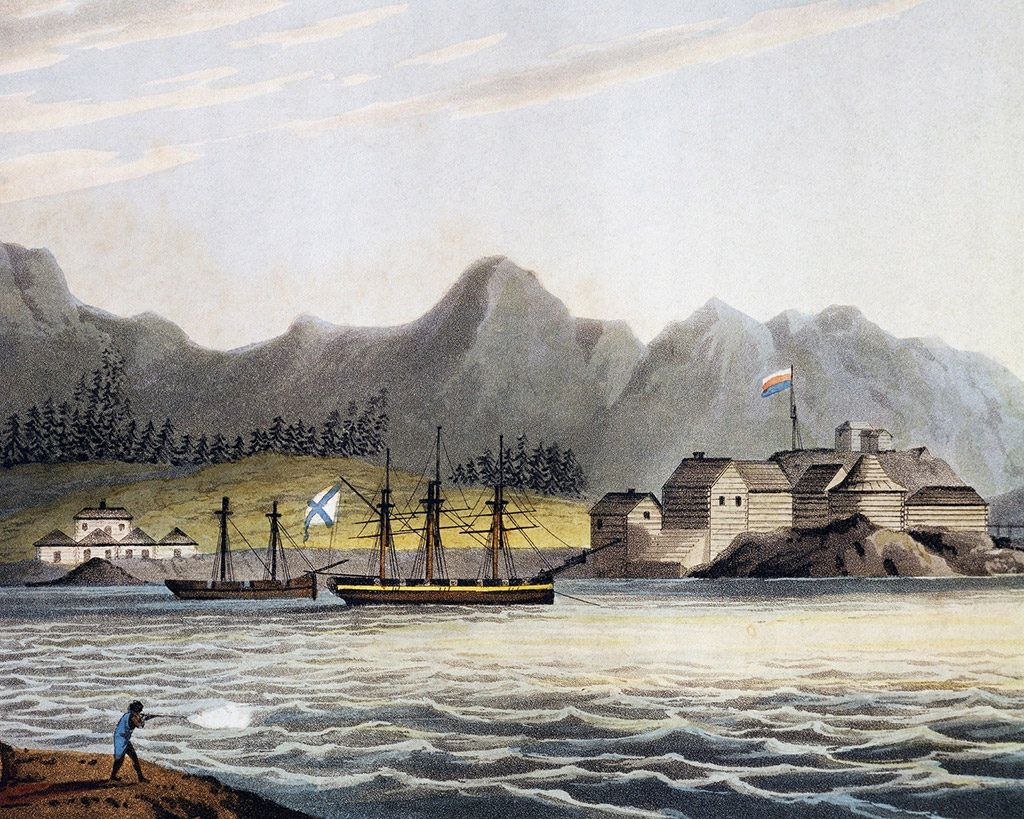Alaska Purchase brings change to U.S.
Later that year, an official transfer ceremony would take place in Sitka, the former capital of “Russian America.” This day is October 18, now known as Alaska Day. This was the day that the Russian Imperial flag was slowly lowered and “Old Glory” was proudly raised to get her first view of the stunning Alaska landscape. Alaska was now an official part of the greatest country in the world. Years would pass, the territory would become a state and earn a star on the United States Flag. The next time you are doing something you consider “Alaskan,” think about the day that made all of this possible. Think about a beautiful, mountain backdrop with the sun shining and an eagle soaring. Picture the Stars and Stripes being hoisted up that flag pole for the very first time on this land. Let a feeling of pride, adventure, and freedom run through you, and tell The Story of Alaska. Join as we commemorate the 150th anniversary of Alaska |
|

Tracing Alaska’s Russian HeritageAlthough Russia’s colonization of the territory remains a relatively obscure chapter in world history, the acquisition of Alaska by the administration of President Andrew Johnson has had enormous economic and strategic value for the U.S. In the history of American land deals, it is second in importance only to the Louisiana Purchase. For Russia, the sale was the logical conclusion of a colonial venture that had begun with the first Russian landing on Alaska’s shores in 1732. This endeavor, based on a lucrative trade in the luxurious pelts of sea otters, had become shaky by the early decades of the 19th century, when 700 Russians, strung largely along the coast, were trying to exert sovereignty over hundreds of thousands of square miles of territory in the face of increasing British and U.S. encroachment. In the words of Ty Dilliplane, an archaeologist specializing in Alaska’s Russian period, the remote territory was the “Siberia of Siberia”—a place hard to supply and even harder to defend. Not everyone in the U.S. saw the Alaska purchase as a bonanza. Critics of Johnson and Secretary of State William Seward, who oversaw the negotiations with Russia, derided America’s purchase of this northern territory — twice the size of Texas — as “Seward’s Folly,” “Johnson’s polar bear park” and “Walrussia.” But today—given Alaska’s key military and strategic importance in the Arctic, its huge stores of oil and gas, its enormous quantities of salmon and other fish, and its seemingly limitless expanses of wilderness, which cover most of the state’s 663,000 square miles — it’s hard to imagine the U.S. without its Last Frontier. read more |

‘Alaska history is writ large on the landscape in Sitka’Interview with Jeff Budd What does the 150th Sesquicentennial Commemoration means to Alaska? March 30th is officially recognized in Alaska as Seward’s Day. On this date in 1867, Russia and the United States signed the Treaty of Cession agreeing to the sale of vast Alaskan lands. That same year, on October 18, now known as Alaska Day, the official transfer ceremony took place in Sitka, or New Archangel, which had been the capital of Russian America since 1808. The Russian Flag was lowered, the American Flag was raised, and Alaska became a US territory. Today, historic sites from Alaska Native culture and from Russian occupation remain in Sitka as reminders of our heritage. The Sesquicentennial Committee will officially “kick off” the commemoration on March 30, the date of the Treaty of Cession. Then, throughout the year, Sitka will host numerous community activities that promise to provide interest for community members and visitors alike. In culmination of this special year, the Alaska Day Festival Committee will host their annual weeklong series of events surrounding Alaska Day. read more |
Windstar to Alaska in 2018
CLIA predicts BIG cruise year
Viking to offer 11-day itineraries
Visitor industry shining bright
Magazine honors Kruse for building strong company
ATIA brings new ideas for tourism marketing
Tracing Alaska’s Russian heritage
Alaska Purchase brings change to U.S.
‘Alaska history is writ large on the landscape in Sitka’
Castle Hill in Sitka. Photo courtesy Visit Sitka – William Greer Interview with Jeff Budd Sitka Community Liaison, Alaska’s Sesquicentennial What does the 150th Sesquicentennial Commemoration means to Alaska? There are specific moments that shape the future beyond anything that could have been foreseen at…









